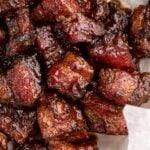
Pork Belly Burnt Ends on the Grill
Pork belly burnt ends are one of my favorite recipes for grill season. Thick, juicy pork belly grilled low and slow, first in a savory dry rub and then in a rich BBQ sauce, for a heavenly, smokey flavor you won't be able to get enough of.
Yield: servings
Equipment
- Charcoal grill (or smoker)
- Medium bowl
- Cutting board
- Sharp knife
- Large bowl
- Silicone spatula (optional)
- Disposable aluminum pan
- Aluminum Foil
Ingredients
For the Dry Rub
- 2 teaspoons chili powder
- 1 packed tablespoon brown sugar see Notes
- 1 teaspoon smoked paprika
- 1 teaspoon garlic powder
- 1 teaspoon onion powder
- 1 teaspoon cumin
- ¼ teaspoon black pepper
- 1 teaspoon salt
- ¼ teaspoon cayenne pepper
For the BBQ Glaze
- ⅔ cup BBQ sauce of choice
- 3 tablespoons butter
- 2 packed tablespoons brown sugar see Notes
For the Pork Belly
- 3 pounds pork belly non-salted, skin removed
- 2 tablespoons olive oil or other neutral oil
Instructions
- Set up charcoal grill for low, indirect heat, between 225° Fahrenheit to 250° Fahrenheit.
- Add all ingredients for dry rub to small bowl. Mix thoroughly and set aside.
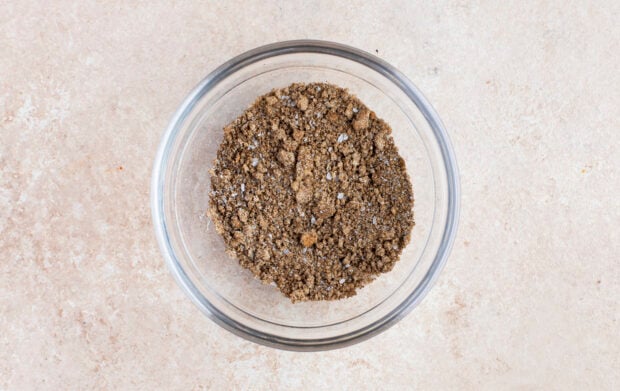
- Place pork belly on cutting board. Using sharp knife, cut pork belly into roughly 1.5-inch cubes.
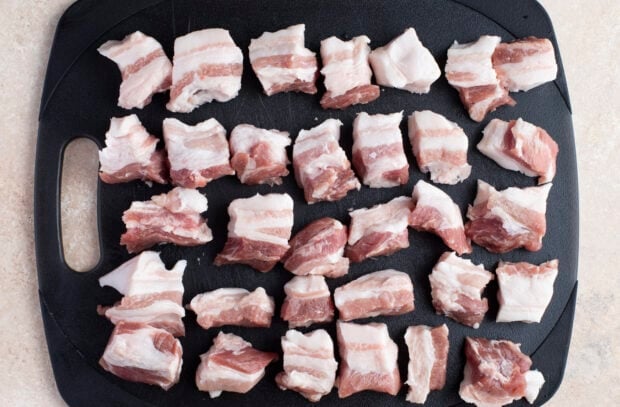
- Transfer pork belly cubes to large bowl. Add olive oil and toss or stir to coat cubes thoroughly. Add dry rub and toss or stir again.
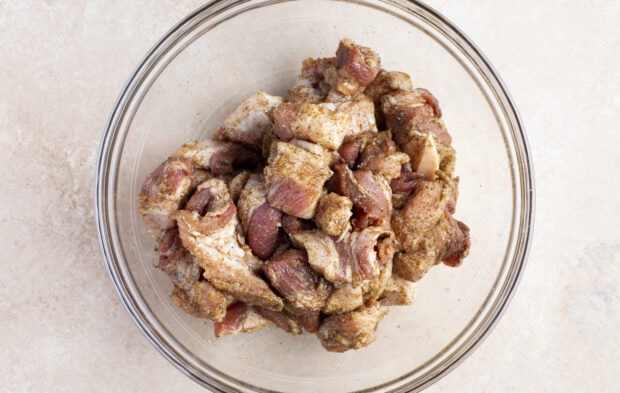
- Transfer seasoned pork belly cubes to grill, placing directly on bare wire rack over indirect heat. Grill approximately 2 ½ hours, until meat is dark red.
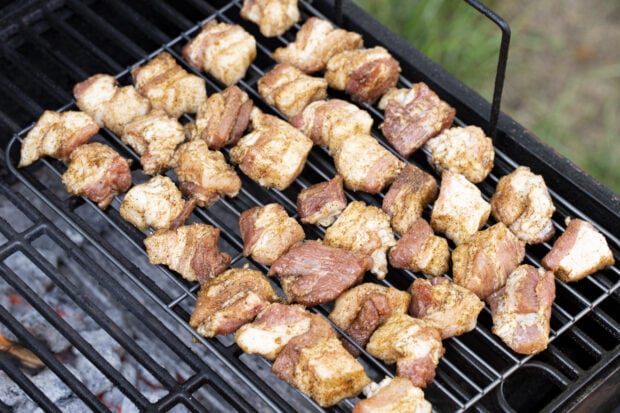
- Remove meat from grill and place in disposable aluminum pan. Add ingredients for BBQ glaze to pan and stir all ingredients until cubes are thoroughly coated.
- Cover pan with aluminum foil and place pan on wire rack in grill. Grill additional 2 hours, or until pork belly reaches internal temperature of 200° Fahrenheit.
- Once pork belly reaches target temperature, carefully remove pan from grill. Let pork belly rest 3 to 5 minutes, then serve warm with desired sides.
Notes
- Brown Sugar: If you're watching your sugar intake, you can use equal amounts Brown Swerve instead.
- Make it Keto: Use Brown Swerve instead of brown sugar. Use a keto-friendly store-bought BBQ sauce (like Primal Kitchen Organic & Unsweetened Classic BBQ Sauce or G Hughes Original Sugar Free BBQ Sauce) or use our recipe to make your own keto BBQ sauce at home.
Nutrition
Serving Size: 1serving | Calories: 798cal | Protein: 13g | Fat: 79g | Saturated Fat: 29g | Trans Fat: 0.1g | Cholesterol: 107mg | Sodium: 507mg | Potassium: 321mg | Total Carbs: 9g | Fiber: 0.5g | Sugar: 7g | Net Carbs: 9g | Vitamin A: 402IU | Vitamin C: 1mg | Calcium: 19mg | Iron: 1mg